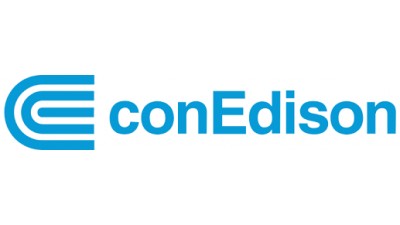Q&A: Reducing Hotel Energy Consumption Doesn't Have To Mean Lower Profit Margins

A busy hotel eats up a lot of power on a daily basis. The associated costs of running a hotel are enormous, and owners loathe lowering room rates at the risk of losing profits.
There are some industry players who believe there are steps hotel owners can take to lower the costs of power while not eating into profit margins. Bisnow chats with Con Edison Business Development Manager David Pospisil on steps managers and owners can take to pursue sustainable practices without sacrificing quality.
Bisnow: In large cities like New York, even reducing room rates to remain competitive can dramatically downsize profit margins. What is one step hotel owners can take to immediately drive down energy costs in the short-term, without reducing the quality of a hotel stay and lowering prices to remain competitive?
David Pospisil: There’s a lot of different things hotels can do. The easiest first step is to change the lighting. Many larger hotels are similar to retail complexes, using lots of lighting for restaurants and bars and seating areas. LED lighting can replace just about any kind of lighting in the hotel, whether in common areas, external lighting and of course in the rooms themselves. It’s certainly complex. There are multiple solutions available, and an electrical company like Con Edison can help them achieve them, including providing loans for energy saving investments.
Many hotels have installed wireless controls in their rooms with occupancy sensors. When they sense that there’s no one in the room, they switch off or dim the lighting and lower the temperature of the air conditioning. Owners are also beginning to install EC (electrical commutated) motors into their buildings. These are fans without carbon brushes, which are generally more efficient than traditional units.
These are easy replacements, usually done with control upgrades so that you can control lights and temperature based on occupancy. Depending on the size of the hotel in New York City, for instance, we have varieties of hotels and super hotels. Hotels in Manhattan will have ballrooms, trade show floors, conference rooms. In the outer boroughs, you may have smaller hotels where you just have the rooms and a smaller lobby. The complexity of your system differs by the building’s usage expectations.
Bisnow: What is a realistic, yet significant, energy savings goal hotel owners can achieve by the end of 2017? Is there one?
Pospisil: Of course. If you have either CFL (compact fluorescent lighting) or incandescent lighting and change to LED bulbs, you can save 15% to 20% of costs associated with lighting. That’s a very quick upgrade. You can bring in a crew and do one floor a night, and finish in a week or month, depending on how big your hotel is; it’s not like changing out a central plan or central controls. It’s all local work for the most part. Set up a ladder and change the bulb or fixture and move on.
Bisnow: Is there a part that hotel visitors can play to help reduce hotel utility and electric bills? What are some incentives hotel owners can offer to ensure that visitors don’t simply treat hotels as a getaway from cost-saving habits at home?
Pospisil: There’s certainly a lot of hotel chains now promoting and encouraging their customers to undertake sustainability actions, whether by setting the AC at a higher temperature or reusing towels — the latter saves energy if the building uses on-site laundry. Many hotels have installed slower showerheads and faucets, and if you use the right ones people don’t even notice the difference in pressure. Some hotels actually do offer small incentives, such as offering free treats or desserts in the lobby if you practice these measures.
Bisnow: What are some key differences in energy saving best practices and demand management programs between hotels based in the heart of metropolitan areas, versus hotels on the outskirts or in smaller towns? What can they learn from each other?
Pospisil: I don’t think we even have to leave New York City to answer that question. Con Edison, for instance, maintains central utility plants. We have heat and cooling to serve common spaces, and in many cases there are cooling loops that actually circulate and run throughout the building and provide heat transfer liquid to AC units in the rooms. These central controls are a key difference between bigger and smaller hotels. In smaller or more rural hotels, most of the windows and AC/heating units are not terribly efficient, as they don’t have the higher levels of controls that the wireless systems do. They’ll just have some knobs and whoever is staying in the room sets the temperature, and if they forget to turn it up or off when they go out, there’s no way to control that.
But there are upgrades available. You can now update existing AC units to give them the wireless connections and occupancy sensors I mentioned earlier.
Hotel owners can go to Con Ed’s website and look up case studies similar to their own, to find out what solutions hotels of similar size and starting points undertook, for example. Ultimately, if owners can decrease cost on their back end, their profits are higher and they can lower the price tags on their rooms. Technology is such that you can reduce cost without diminishing the quality of the stay. In fact, these upgrades often up the quality of lighting and efficiency of HVAC units or whatever it might be.
For more information on how Con Edison can help your hotel save energy and costs, contact David Pospisil at 212.460.2429 or pospisild@coned.com.
To learn more about this Bisnow content partner, click here.

